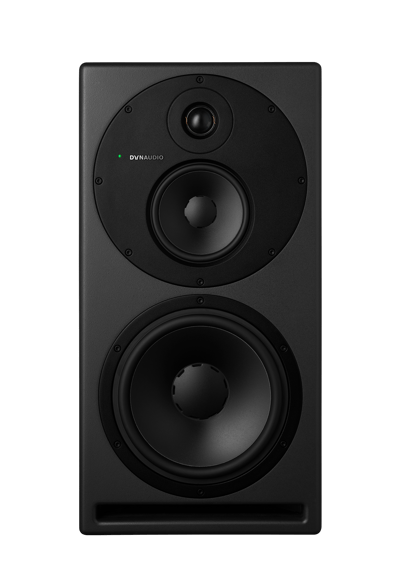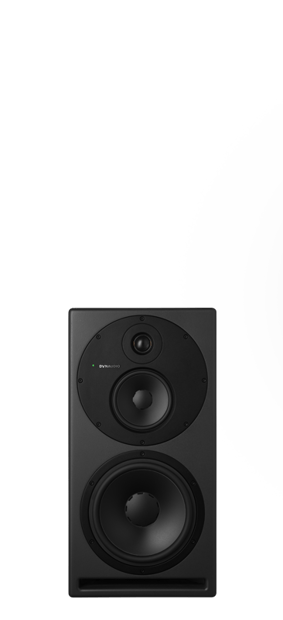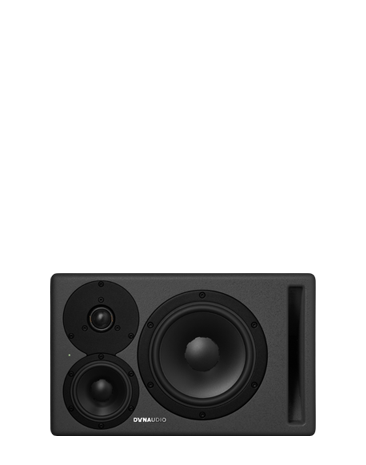- Home
- >
- Professional Audio
- >
- Core
- >
- Core 59
- Home
- >
- Professional Audio
- >
- Core
- >
- Core 59
Core 59
This is what performance sounds like.
Core 59
Core 59 brings the pinnacle of precision, consistency and reliability to your studio. This is what performance sounds like. When you’re working with art – whether it’s someone else’s or your own – you need equipment you can trust. A professional producer or engineer is part of the creative process, and his or her ears are the most trustworthy tools they have. They know what sounds good, and they know that a good reference monitor can help them make a good performance great.
Core 59 – the flagship of our high-end professional reference monitor series – is that monitor. This three-way speaker features uncompromising class-D amplification, cutting-edge digital signal processing, a super-inert 32mm-thick baffle and a flat bass response down to 36Hz at -6dB.
It’s a serious system designed for serious audio professionals. Core 59 has been made for the highest-demand environments that recording engineers, mixers, producers, and editors work in – and has been specifically designed to solve many of the monitoring issues that career professionals face every day.
Listen all day (and all night) without fatigue
Listener fatigue is the thorn in the side of every studio engineer. Once it sets in, you’re done for the day. Core 59’s Esotar Pro tweeter has been created to keep fatigue at bay so you won’t be finished before the mix is.
We’ve long been known for our sweet-sounding soft-dome tweeters. They provide hours of pinpoint imaging and detail without the tiring quality that’s common to other designs. The Esotar Pro builds on this heritage with the ingenious Hexis device. It’s an inner dome that sits just behind the diaphragm and optimises airflow, smooths the frequency response and eliminates unwanted internal resonances. The result is outstanding imaging, transient detail, and effortless high frequency response.
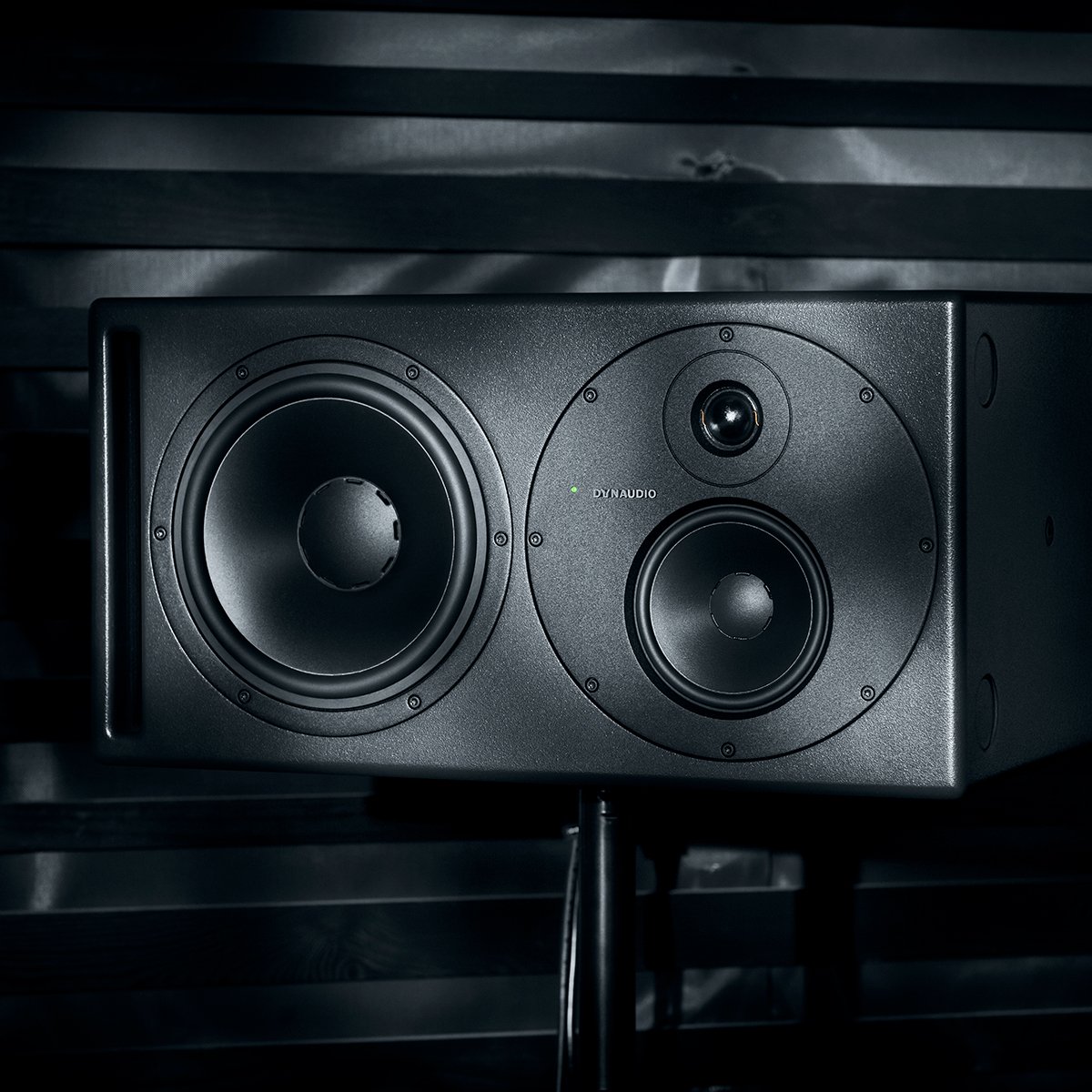
Staggering detail
The speaker’s 5in midrange driver provides staggering detail.
It uses our proprietary MSP (Magnesium Silicate Polymer) material in its cone for the best combination of lightness, stiffness and damping and, coupled with an aluminium voice-coil, has an incredibly fast response and authoritative control from its neodymium magnet system.
With crossover points at 385Hz and 5kHz, Core 59 delivers so much more of the critical vocal range in one driver than typical designs, ensuring your mix decisions on vocal balances and dialogue subtleties are made with total confidence.
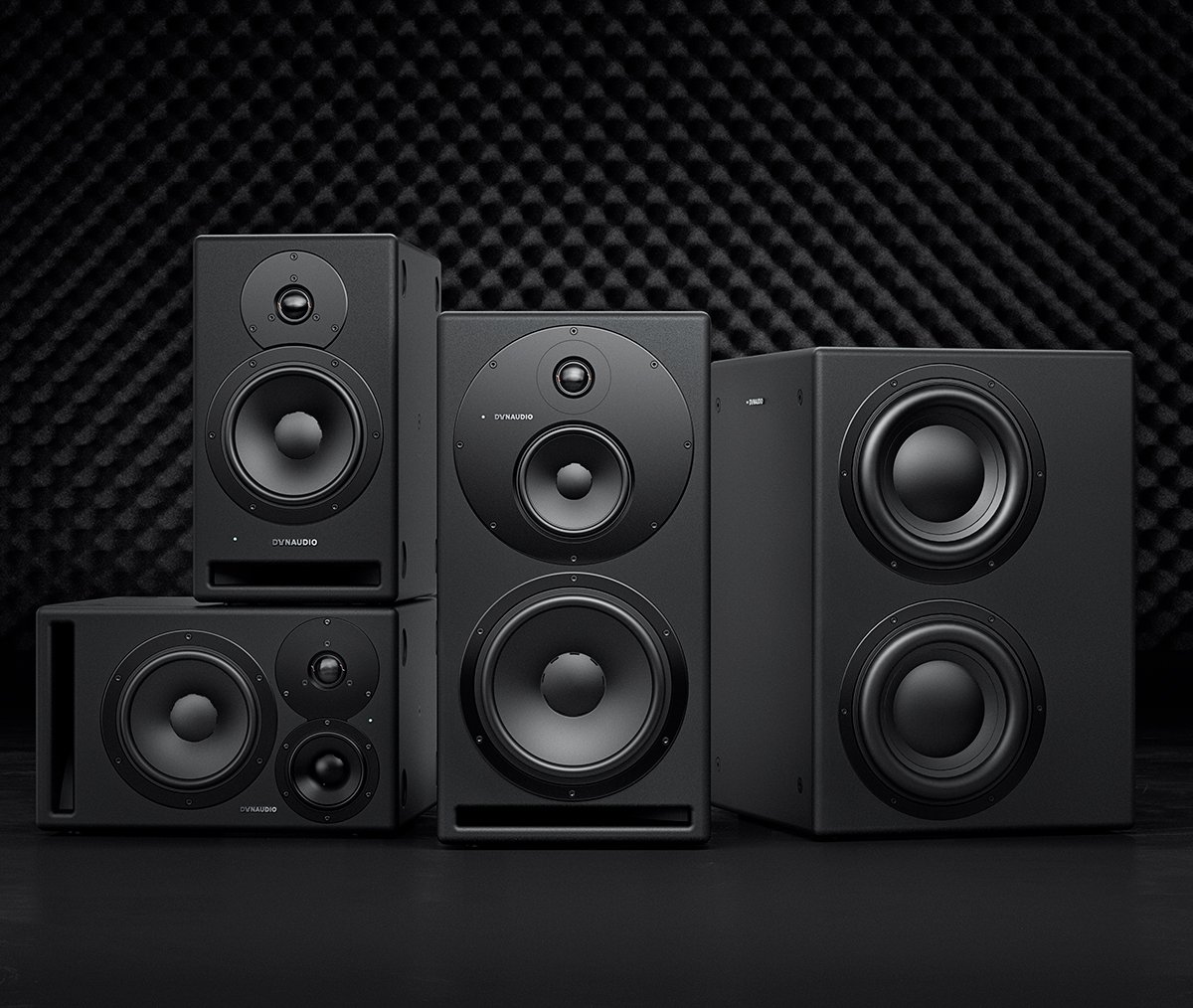
Everything you need to hear, everywhere you go
Core 59’s bass driver has emerged from over 18 months of intensive study into subwoofer driver technology, including our 18S subwoofer, which dives all the way down to 16Hz.
The outcome of that research is an improved copper voice-coil and glass-fibre former, pushed by ceramic magnets and a 500W class-D Pascal amplifier. It gives the 9in long-excursion woofer even more grip on the bottom without sacrificing a deep frequency response.
And because each driver is handmade in our factory in Denmark (we produce 1.4 million drivers each year for our home hi-fi, custom-install, in-car and pro-studio speakers), we can maintain incredible consistency. That means you can use Core monitors in multiple studios and have them all sound and perform at the same high level – everything you need to hear, everywhere you go. Should you need to replace a driver, you can either do it yourself and calibrate it to within 0.2dB as on the AIR series, or have your service centre do a full factory-level calibration.
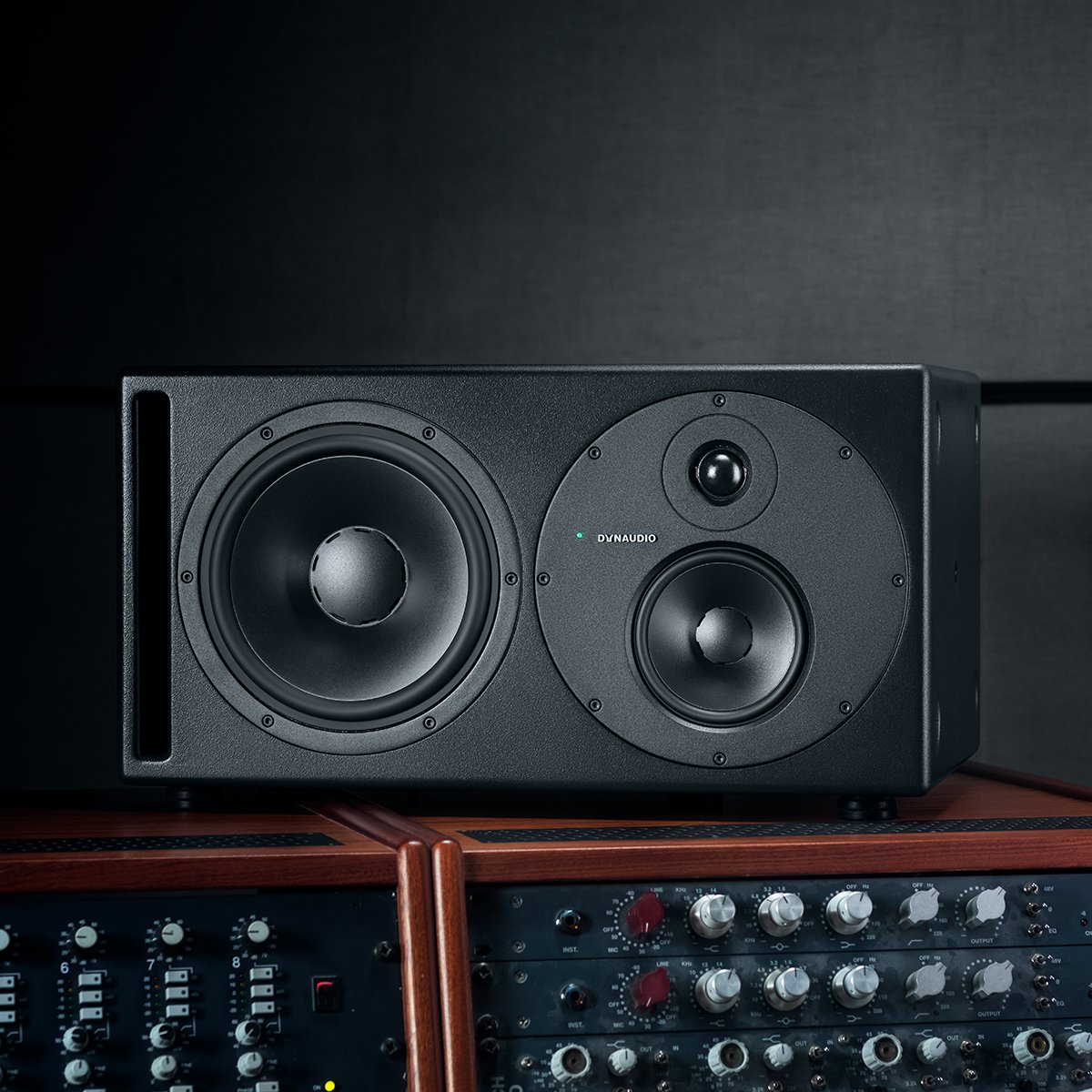
Ultra-flexible positioning and the Orbit baffle
When we revolutionised studio monitoring with the AIR series, we also revolutionised speaker positioning. Literally.
AIR made it possible to use a three-way speaker in multiple orientations without compromising the midrange driver and tweeter’s phase response by using sealed midrange and tweeter assemblies that can be rotated in the cabinet.
Core 59’s Orbit baffle rotates too, so you can use it in left, right, or centre-channel orientation. You can even position the woofer above the tweeter/midrange assembly to accommodate placement in front of a console in an LCR array.
Since every application is unique and monitors may need to be placed in a variety of environments – on their sides, vertically or sometimes even inverted – we’ve given Core 59 indentations on all four sides. Just fit our special Dynaudio pads to protect the cabinet's finish and stabilise it on the mounting surface.
Core 59 is also compatible with standard VESA mounting brackets or our custom K&M bracket should you want to mount them on walls or the ceiling as part of a multichannel or immersive-audio reference system such as Dolby ATMOS.
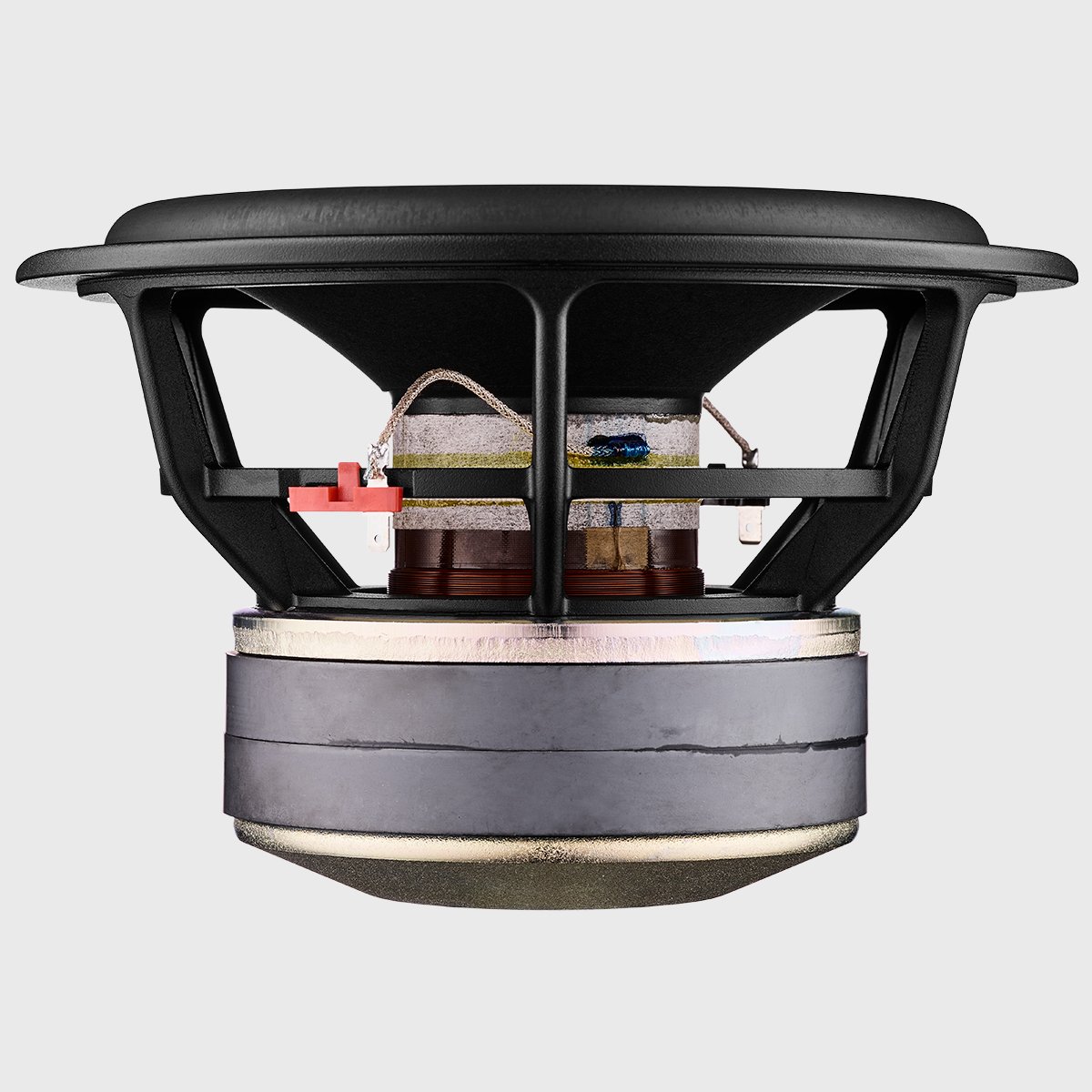
Sophisticated DSP that’s surprisingly easy to use
The AIR series was famous for its advanced DSP system. But our acoustic engineers don’t believe laurels are for resting on, so they’ve constantly been looking for better and more innovative ways of doing it.
That work has resulted in some great leaps in DSP sophistication – but also in the way it’s applied in everyday use. You, our users, wanted something easier to use, and that’s exactly what you get with Core – with even better performance.
Positioning is critical when installing a monitor system. That’s why each Core 59 has two DSP filter switches to address its position and boundary locations. For example, if you place the monitors on the meter bridge of a large-format mixing console, set them to ‘Desk’. This will help compensate for the first reflection created by the mixing surface. On the other hand, if you put the monitors into a purpose-built wall, setting the Position 1 filter to ‘Soffit’ will compensate for the increased bass response.
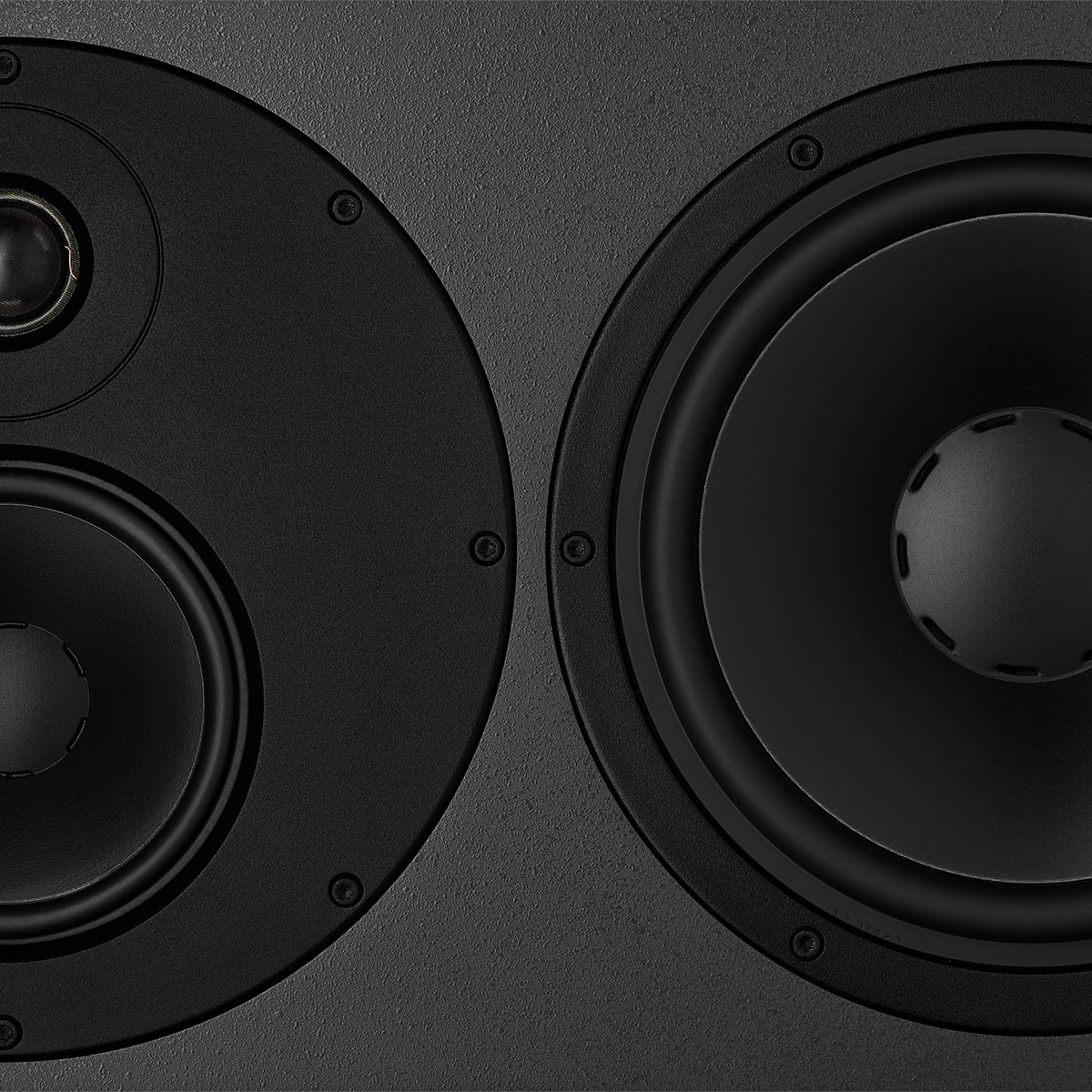
The tone that meets your tastes
Boundary effects created by placing a monitor close to walls or a ceiling can be compensated for by adjusting the Position 2 filter between ‘Wall’ or ‘Corner’. These filters help compensate for the reflections created by the boundary walls, especially in the lower frequencies.
There’s also a low-frequency 80Hz Linkwitz-Riley cutoff that can be engaged if you’re using Core 59 with a subwoofer to extend the low frequency response.
Users can also alter the overall presentation. Core 59 uses the same concept as the LYD series Sound Balance filter – a different design to typical shelving-EQ tweeter and woofer adjustments found on most active monitors.
Instead of simply fine-tuning the tweeter level up or down, which will affect phase response, Core 59 uses a full-spectrum band-pass filter that tilts depending on the desired tonal response. In the ‘Dark’ setting, the entire frequency response is tilted so that 20kHz is down -1.5dB, while 20Hz is up +1.5dB. In ‘Bright’, the tilt is reversed (+1.5dB at 20kHz and -1.5dB at 20Hz).
This gentle filter maintains the proper phase response between the drivers while providing the tone that meet your tastes. The changes are subtle, but often this little tweak is enough to make the sound balance just right.
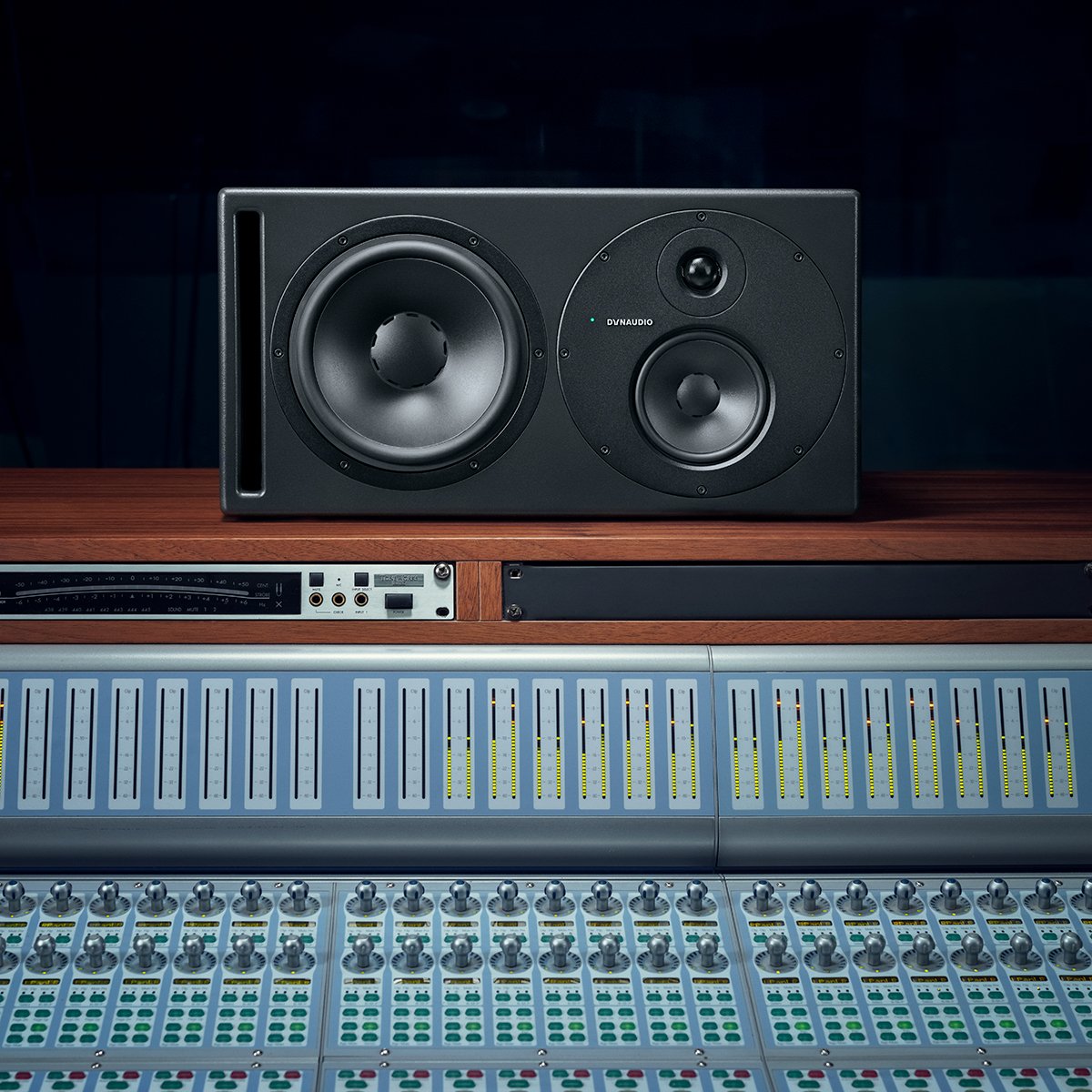
Input sensitivity the way you want it
The noise-floor and signal resolution of any monitoring system is critical to its performance.
Whether you’re using the analogue or digital inputs, you need to be able to control the gain staging between the monitor controller and the speaker system. We’ve provided a range of 0dBu to +24dBu to match the analogue input sensitivity to the output level. Once optimised, Core 59 processes all analogue signals at a 192kHz sampling rate and 64-bit resolution in the DSP (from the 24-bit analogue-to-digital converter) for the greatest degree of mathematical precision.
There’s a switch to determine the maximum output SPL with the greatest bit-depth in the DSP. If you want the maximum level, set this to 112dB. If you work mostly at lower levels, choose a lower SPL setting to optimise the bit-depth of the DSP for both inputs.
When using the AES digital inputs, you must determine which channel (left or right) of the AES stream is used for that monitor. Core 59’s DSP operates at the incoming sample rate and either locks to the digital audio clock or word clock to maintain the most accurate signal possible.
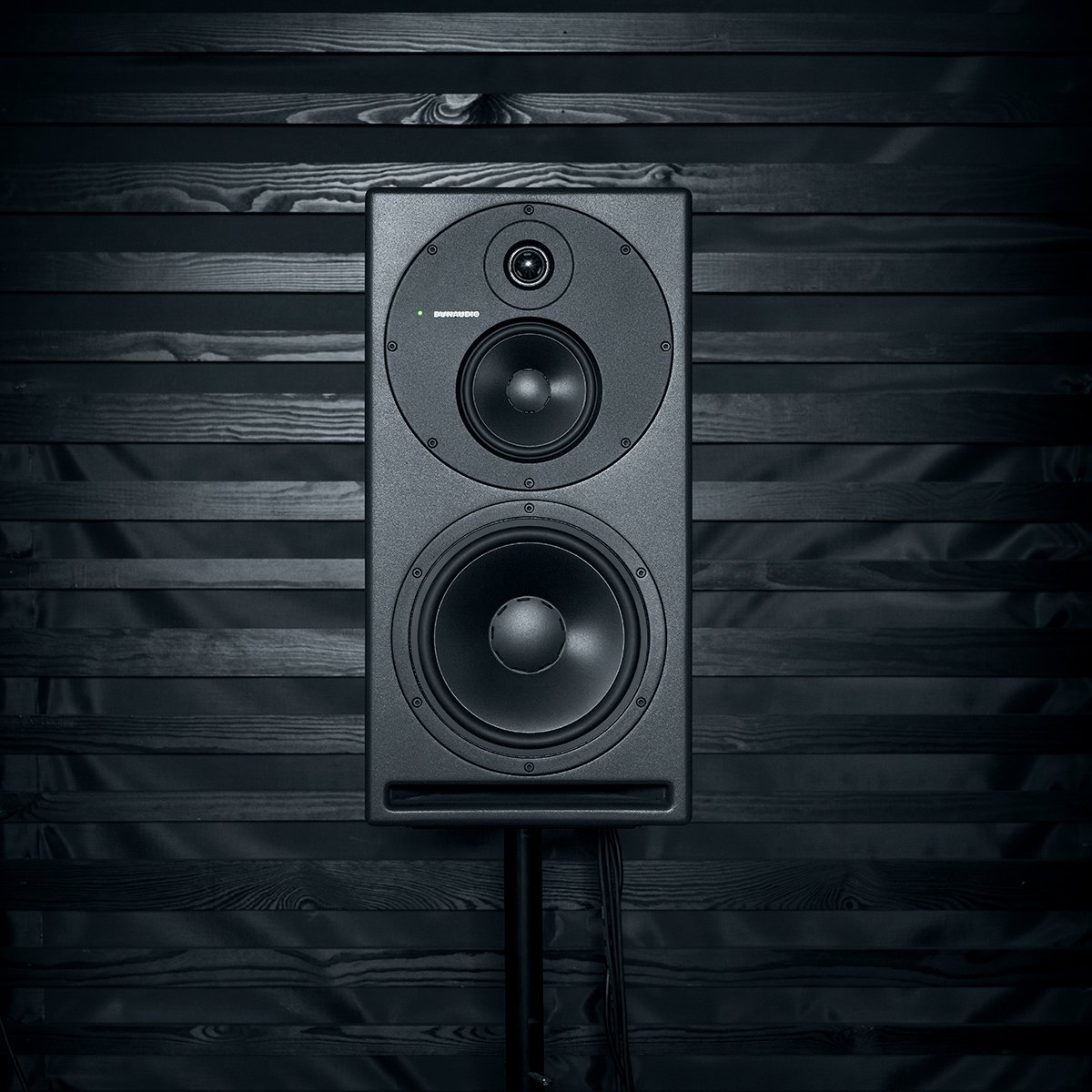
The beating heart of your studio
We’ve designed Core 59 for you. We’ve designed it to be used however and wherever you need it – whether that’s for near-field, mid-field or main monitoring, or in soffit-mounted set-ups.
It’s made for music mastering, mixing, and recording; theatrical re-mixing; editorial and sound design for games or anywhere else you need an uncompromising critical monitoring system.
Core 59 is ready to be installed in high-SPL immersive audio and other multi-channel environments with both analogue and digital connectivity, DSP controlled acoustic response, and versatile positioning. That means complete tonal consistency whatever your monitoring needs.
It really does give you everything you need to hear.
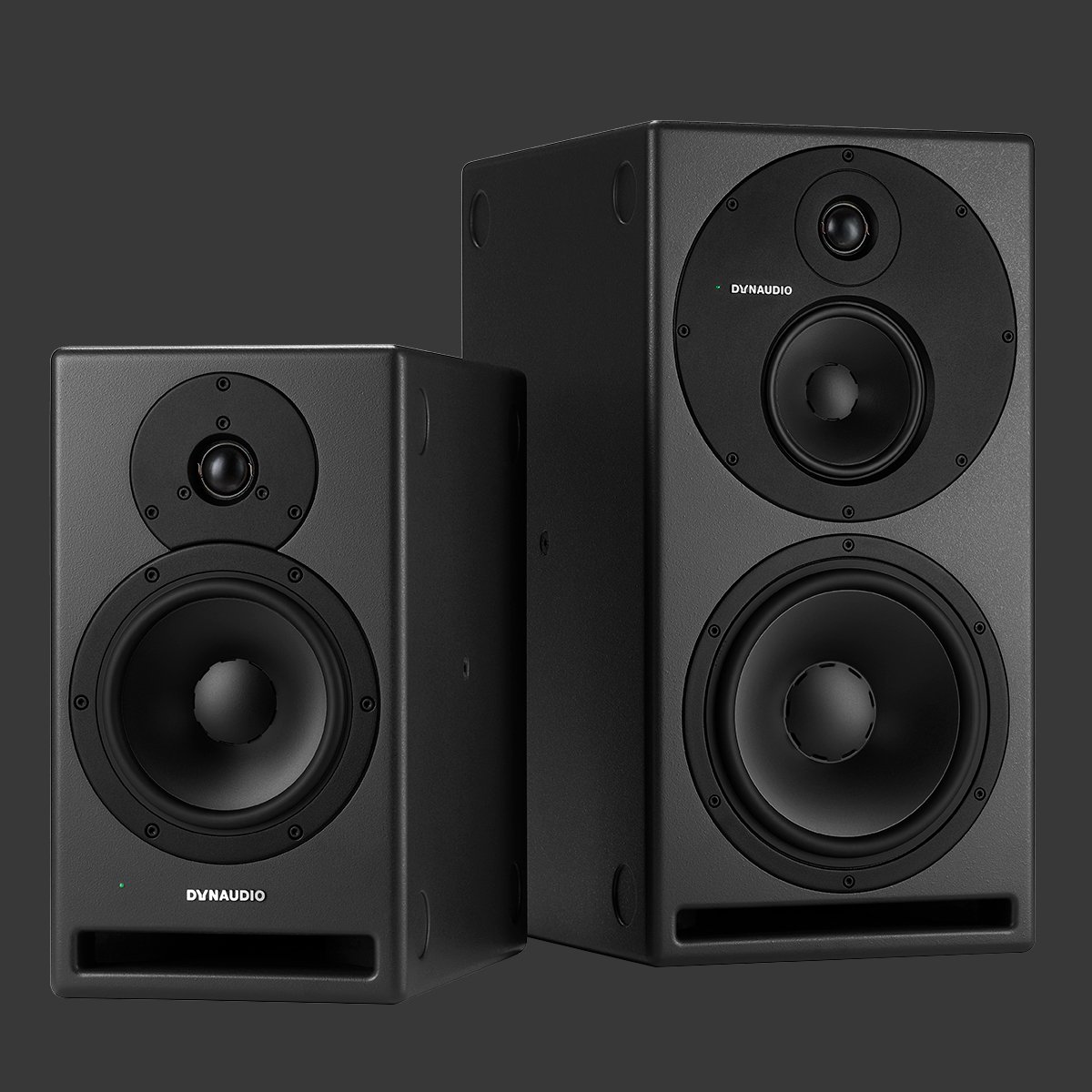
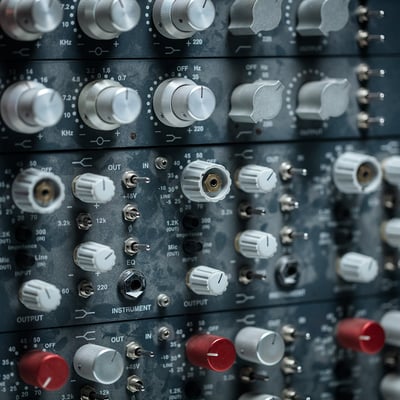
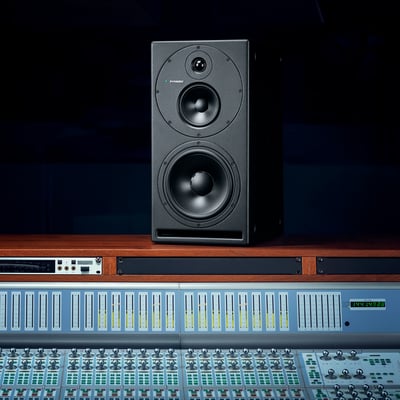
Core
Cechy
Hand-crafted
Designed, developed, tested and made in Denmark. All the drivers are hand-made at Dynaudio HQ, and each speaker is individually calibrated before it leaves our factory
Advanced DSP
Simple to use… but incredibly powerful. Core’s DSP optimises performance for positioning, sound balance and bass extension
Power to spare
Each driver has its own dedicated class-D amplifier: 500W each for the woofer and midrange drivers, and a 150W amp for the tweeter. That’s some serious headroom
Esotar Pro tweeter
Dynaudio’s already legendary high-frequency driver has been redesigned and re-engineered for high-performance professional use
Core 59
Specyfikacje
- Stan Aktualny
- Segment Pro
- Seria Core
- Typ Monitor średniego pola
- Wejścia analogowe XLR
- Wejścia cyfrowe AES3 XLR
- Wyjścia cyfrowe AES3 XLR
- Maks. SPL (Bezechowy dB @ 1m) 113
- Maks. SPL (Półbezechowy dB @ 1m) 119
- Moc wzmacniacza głośnika niskotonowego (W) 500
- Moc wzmacniacza głośnika średniotonowego (W) 500
- Moc wzmacniacza głośnika wysokotonowego (W) 150
- Wejście zasilania AC 100-240V 50/60Hz
- Dolna granica częstotliwości (Hz @85 dB +/- 3 dB) 39
- Górna granica częstotliwości (kHz @ 85dB +/- 3 dB) 27
- Dolna granica częstotliwości (dynamiczna) (Hz @ -6 dB) 36
- Górna granica częstotliwości (dynamiczna) (kHz @ -6 dB) 29
- Konstrukcja obudowy Bass-reflex z wylotem z przodu
- Zwrotnica 3-drożny procesor DSP
- Częstotliwości podziału zwrotnicy (Hz) 385/5000 Hz
- Głośnik wysokotonowy 1.1 cala Esotar Pro soft dome ze stożkiem Hexis
- Głośnik średniotonowy 5in MSP
- Głośniki niskotonowe 9in MSP
- Waga kg 24,6
- Szerokość mm 280
- Głębokość mm 365
- Wysokość mm 545
- Głośniki w opakowaniu 1
- Wykończenie Dark Grey
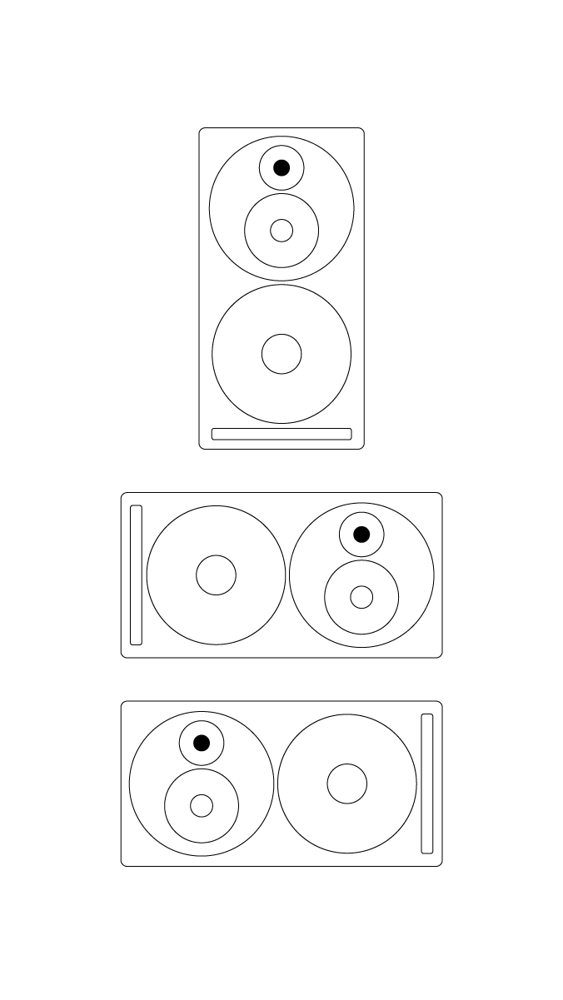
Recenzje
Perfect for mixing and mastering
"The Dynaudio Core 59 is a modern and high quality active monitor for a reasonable price. It provides an authentic, analytical result and is perfect for mixing and mastering. It is also fun and not overly critical, so it can be used over a long period of time."
German music portal Bonedo
Seria Core
- Stan:
- Segment:
- Seria:
- Typ:
- Wejścia analogowe:
- Wejścia cyfrowe:
- Wyjścia cyfrowe:
- Maks. SPL (Bezechowy dB @ 1m):
- Maks. SPL (Półbezechowy dB @ 1m):
- Moc wzmacniacza głośnika niskotonowego (W):
- Moc wzmacniacza głośnika średniotonowego (W):
- Moc wzmacniacza głośnika wysokotonowego (W):
- Wejście zasilania AC:
- Pobór mocy w trybie gotowości (W):
- Dolna granica częstotliwości (Hz @85 dB +/- 3 dB):
- Górna granica częstotliwości (kHz @ 85dB +/- 3 dB):
- Dolna granica częstotliwości (dynamiczna) (Hz @ -6 dB):
- Górna granica częstotliwości (dynamiczna) (kHz @ -6 dB):
- Konstrukcja obudowy:
- Zwrotnica:
- Częstotliwości podziału zwrotnicy (Hz):
- Głośnik wysokotonowy:
- Głośnik średniotonowy:
- Głośnik średniotonowy/Głośniki niskotonowe:
- Głośniki niskotonowe:
- Waga kg:
- Waga lb:
- Szerokość mm:
- Głębokość mm:
- Wysokość mm:
- Szerokość cala:
- Głębokość cala:
- Wysokość cala:
- Głośniki w opakowaniu:
- Wykończenie:
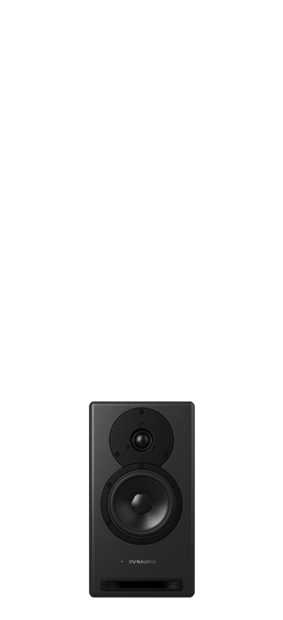
Core 5
- Aktualny
- Pro
- Core
- Monitor bliskiego pola
- XLR
- AES3 XLR, BNC word clock 1x BNC word clock
- AES3 XLR
- 104
- 110
- 280
- 280
- 100-240V 50/60 Hz
- 0.48
- 46
- 26
- 42
- 29
- Bass reflex z przodu
- 2-drożny procesor DSP
- 3800 Hz
- 1.1 cala Esotar Pro soft dome ze stożkiem Hexis
- 5 cala MSP
- 8.6
- 19
- 190
- 265
- 353
- 7 1/2
- 10 3/8
- 14
- 1
- Dark Grey
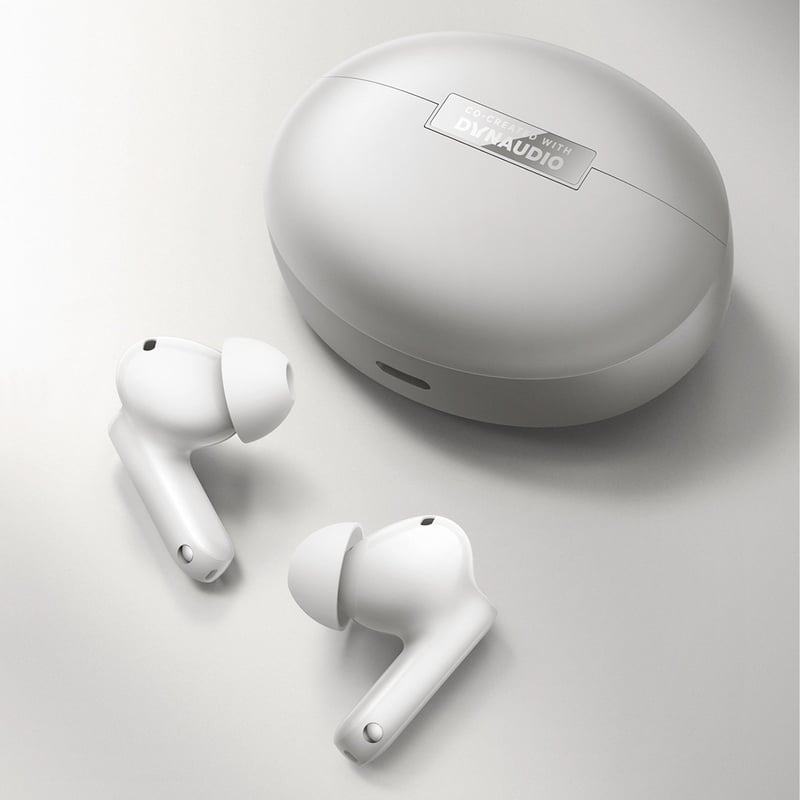
Dynaudio teams-up with OPPO for Enco X3s earbuds
We're thrilled to announce the release of OPPO's Enco X3s true wireless noise cancelling earbuds, with Dynaudio sound tuning.

Why are there holes in our speaker drivers?
On this episode of Ask The Expert, Otto explains why our speaker cones have small, rectangular slots around the central dome. Far from being a random ...
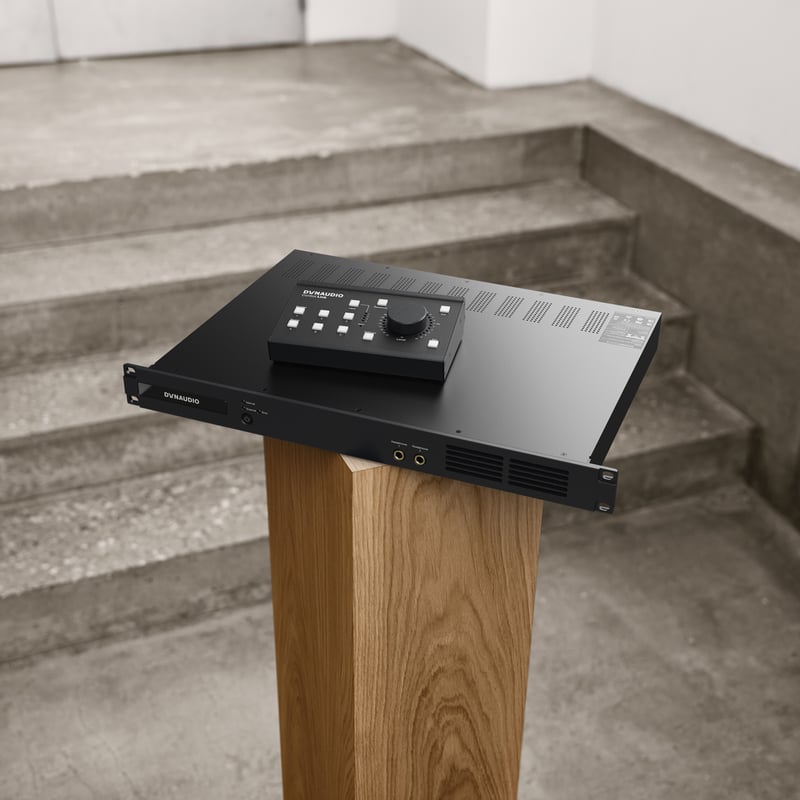
Dynaudio Control series
We are pleased to introduce the Dynaudio Control series: a suite of next-generation audio tools engineered to serve as the central monitor controller ...




